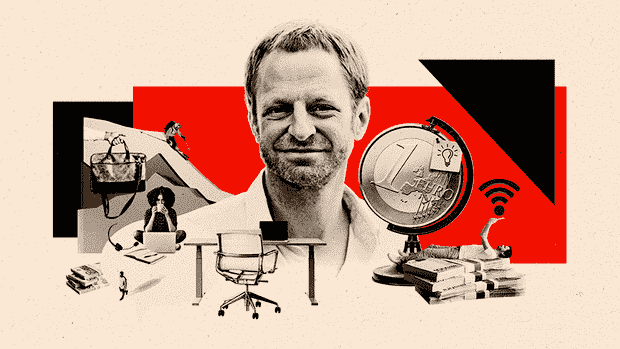Tillmann Prüfer is a member of the editor-in-chief of “Zeit-Magazin”.
I read in the “Welt als Sonntag” that a new mining era is dawning in Germany: digging for non-ferrous metals and rare earths. It has just been agreed that in future there will no longer be large-scale digging up of the earth to scrape out lignite, when the first test drills are already being drilled into the earth in order to lure new treasures out of the soil.
Around 100,000 tons of tin are believed to be in the ground near the Czech border. Copper could be mined elsewhere in East Germany. All this should no longer be done in the name of merciless soil exploitation, but in the service of ecological conversion. If you want to build a wind power plant, you need 30 tons of copper for that alone. Who can object?
From an ecological point of view, regional mining of ores makes just as much sense as regional cultivation of fruit. There is also a motley array of mineral resources that can be mined, including fluorite, cobalt, lithium, nickel, silver, and tungsten. All the stuff you need if you want to get things going with a smartphone or an electric car.
Most of these deposits are located in the Ore Mountains, which got its name from the fact that a lot of ore was once mined there. Ores, especially silver, had already been mined in the Middle Ages.
This was followed by a large wave of settlements, and the Ore Mountains became the center of European mining. Everyone wanted to go there. In the 18th century mining slowly came to an end, it had become too expensive to get all the stuff out of the ground.
Read more columns by Tillmann Prüfer here:
That seems different today. Finally, there are new detection techniques and new mining methods. Everything is more efficient and minimally invasive. A new gold or tin rush could be coming to the region. In this region of Saxony of all places, which has so far been structurally weak, some even say “left behind”.
In addition, the Saxons are said to have a tendency to rebelliousness. Some have already allowed themselves to be carried away to demand that the Free State should be able to declare itself independent again. In view of all the colorful metals, you probably don’t mean it that way.
The Erzgebirge will be the “place to be” again. However, we also know today that such happiness does not last forever. At some point the ore will run out. When that was the case in the 18th century, the need was great at first. Therefore, the people in the Ore Mountains have retrained on all sorts of other products.
Since then, wooden angels and nutcrackers and fine clocks have come from there, and the Harzer Roller, a canary, is a by-product of mining. Really cool stuff. One can already look forward to new Saxon inventions if the precious metal should run out there again.
More: Prüfer’s column: Hoarded fear of crisis
